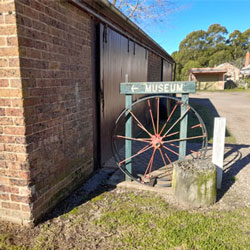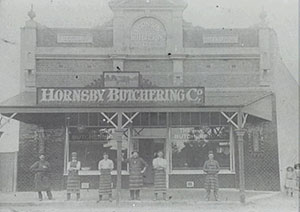Aboriginal heritage
Aboriginal heritage includes places and landscapes that relate to Aboriginal culture and history. These can be ancient but they are not just things of the past. For Aboriginal people these places and landscapes can continue to hold meaning; meaning that is embedded in the land and held in the hearts and minds of people today. Aboriginal heritage can and should be considered important by non-Aboriginal people, but Aboriginal people are the only ones who can determine the cultural significance of this heritage, and the significance they give to particular places can change over time. For this reason it is essential, to actively involve Aboriginal people in the protection and management of their heritage places.
Places do not have to contain physical remains of the past to have Aboriginal heritage significance. They can include ‘natural’ features like:
- places of cultural significance to Aboriginal people, such as those associated with creation stories.
- areas and landscapes like the Hawkesbury River itself, which are culturally important as places of connection, places of history, and places of plenty.
Aboriginal heritage also includes the places in which Aboriginal history ‘happened’. We often call these Aboriginal ‘sites’ and imagine them to be ancient, but they can include historical and contemporary places.
For an understanding on the definitions of ‘Aboriginal object’ and ‘Aboriginal place’ in NSW, refer to the National Parks and Wildlife Act 1974 (the NPW Act).
For an understanding on the definition and understanding of Aboriginal Cultural Heritage in NSW, refer to Heritage HSW website.
Aboriginal heritage places in Hornsby Shire
- living places where Aboriginal people camped along the rivers and creeks and in the bush behind. These include sandstone rockshelters and camps in the open that can contain substantial physical evidence of past Aboriginal use such as food remains (shells, animal and fish bones), tools of stone, bone or shell and the remains of cooking fires. Sometimes though, all that has survived are isolated, discarded implements.
- ceremonial and cultural places like engravings carved on rock, hand stencils and other figures painted in rockshelters and places where ceremonial activities took place. * resource places, where water or food was sourced, or bark was removed from trees for making containers, shields and other implements.
- places of burial, where loved ones were laid to rest.
- visited places, where axes and other tools where sharpened, or in later times, where Aboriginal people interacted with Europeans in and around historical buildings, estates and other places.
- contemporary places of work or recreation.
Most of the known tangible Aboriginal heritage of Hornsby relates to Aboriginal lives in Hornsby Shire prior to the arrival of Europeans, and includes sites created or used after this time. They are mainly located within National Parks and Wildlife Services parks and reserves, and may represent only a small part of the archaeology that is present.
Today Hornsby Shire Council has a new focus on the importance of acknowledging local Aboriginal intangible heritage, including Aboriginal languages and place names across Hornsby Shire, as well as locations and landscapes of ceremonial and spiritual significance.
All known Aboriginal objects and sites are recorded in the Heritage NSW Aboriginal Heritage Information Management System (AHIMS).
For more information on the AHIMS and Aboriginal cultural heritage in NSW, contact Heritage NSW.
Management of Aboriginal heritage
Hornsby Shire Council was the first council in NSW to integrate the management and protection of Aboriginal heritage into its planning processes in the early 1990s.
The management of Aboriginal history and cultural heritage values of Hornsby Shire known today are guided by the Aboriginal Heritage Study and Implementation Action Plan endorsed by Council on 12 June 2024.
The Aboriginal Heritage Study is a Shire-wide analysis of the known Aboriginal history and cultural heritage values of Hornsby Shire (as recorded in 2023) with recommendations to improve consultation and collaboration with local Aboriginal people and Council’s Aboriginal heritage management procedures.
The actions set out in the Implementation Action Plan provide a schedule to guide Council through implementation of the new Aboriginal heritage management strategy and supporting measures when resources, opportunities, and funding permit to ensure Aboriginal heritage in the Shire is protected, understood and celebrated.
Refer to Part 9.5 of the Hornsby Development Control Plan (HDCP) 2013 for general development guidelines for land that may contain an Aboriginal relic or place of heritage significance.
For further information on the requirements to undertake works near an Aboriginal relic or place of cultural significance and best practice guidelines on Aboriginal Cultural Heritage in NSW, refer to Heritage HSW.
Further Aboriginal heritage resources
Renovating a Home
Buying and Selling

Celebrating our heritage through interpretation

Have your say on Hornsby Shire's heritage
Hornsby Shire Council values feedback from the community on what local residents regard as their local heritage.







